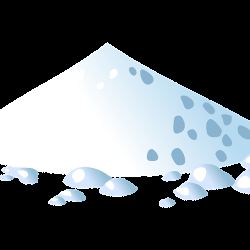Personal injury lawyers are either revered or reviled. Sometime purveyors of junk science, they often prey on a vulnerable and scientifically averse judiciary. But things are a’changin- at least for asbestos. And that signals bad news for the talc plaintiffs.
Proving negligence requires four elements, including “carelessness,” or the breach of a legal standard of care on the part of a defendant, and establishing a direct causal link between the defendant’s carelessness and the harm or disease. In today’s complex, toxic tort cases, proving causation gets pretty tricky.
“Negligence to be actionable must be causal.” Rouleau v. Blotman
Generally, toxic tort cases require two types of causal proof. The first is general causation, i.e., can the substance cause the disease? (This is provable by epidemiological studies or sometimes toxicological studies). The second is proof of specific causation, i.e., did the substance cause the disease in the individual(s) bringing the lawsuit?
Specific causation and mesothelioma
Proving specific causation requires showing the plaintiff was exposed to a sufficient quantity of the offending culprit. This legal requirement assumes a dose-response theory of disease, meaning that the likelihood of illness or adverse response is directly related to the dose level of exposure (the higher the dose, the greater the response). For most people, there is a threshold or minimum triggering level of exposure required before disease will occur (even, let’s say, to the SARS-COVID-2 virus).
However, for much of the history of asbestos litigation, the diagnosis of mesothelioma, a cancer of the lining of the lung (pleural mesothelioma) or abdomen (peritoneal mesothelioma), was considered pathognomonic of asbestos exposure, meaning the disease was believed to have been caused only by asbestos. If you developed mesothelioma, that was automatically regarded as sufficient evidence of exposure to “toxic” levels of asbestos. In other words, before recent case law required courts to insist on proof of specific causation, the mere diagnosis indicated you must have been sufficiently exposed.
But some courts are getting more sophisticated, or perhaps plaintiff’s experts are getting too lazy, arrogant, or complacent with securing an “easy” win. First, as I pointed out 35 years ago, the witch-hunt method of taking occupational histories in mesothelioma cases (involving doctors suggesting to a diagnosed patient how they were “unwittingly” exposed to asbestos - from hair dryers or other remotely likely causes, without ferreting out other possible causal agents), is now regarded as flawed and inadequate. Now we know that mesothelioma can result from other causes besides asbestos, including “idiopathic” causes – or causes we don’t even know about, which might explain the recent rise in mesothelioma deaths in women, even as asbestos exposure has been virtually eliminated. And even if the disease was due to asbestos, which asbestos exposure caused it? The hair-dryer? The past occupational exposure? The second-hand exposure? Or a combination?
Courts are no longer accepting generic, subjective, qualitative levels of exposure from scientific (or medical) expert testimony, such as a qualitative designation of “excessive” levels to prove specific causation. Specific causation means specific, and the standard requires specifics on dose exposure of the plaintiff standing in the courtroom.
And this brings us to talc – the silky powder we lavished on babies’ bottoms for decades until we learned it was contaminated with a rare form of asbestos called tremolite (and sometimes another rare form, anthophyllite). But the “tag, you got the disease - you used enough of the offending product” mantra isn’t working anymore as a legal theory.
Talc
In April, New York’s highest court ruled the estate of Francis Nemeth could not recover damages for Mrs. Nemeth’s use of allegedly asbestos-contaminated Desert Flower talcum powder, claimed to have caused her peritoneal mesothelioma. Why? Because the proof of her level of exposure was speculative.
Mrs. Nemeth claimed decades-long use of the product in a small, unventilated bathroom. One of her expert witnesses, a geologist, constructed a “glove box” and simulated exposures, from which he concluded that she must have been exposed to “thousands to millions of fibers, billions and trillions [of fibers] when you add it up through repeated use.” Her medical expert, Dr. Jacqueline Moline, testified that her exposure was “at levels at which multiple studies have shown elevated rates of mesothelioma.” The court rejected both testimonies.
Relying on earlier and sometimes overlooked cases, the court held the testimony was imprecise and subjective and contained conclusory quantifications. The court ruled that words such as “excessive” and “far more” would not meet the acceptable legal rubric if the methods used to establish those levels were not “generally accepted as reliable in the scientific community.”
In the Nemeth case, the court found that more accurate estimates could have been done by simulating actual exposures in a bathroom of similar dimensions. Because the glove box methodology was not “generally accepted in the scientific community,” the court rejected reliance on the data generated, noting there was ‘an analytical gap between the data and the opinion.” Specifically, the court held that the fiber generation in a glove box could not be used to establish “breathability” or to estimate of the amount that the plaintiff would inhale.
New York courts aren’t even relying on levels exceeding the legally allowed Permissible Exposure Limits (PELs) promulgated under OSHA to establish specific causation.
“At trial plaintiffs failed, as a matter of law, to carry their burden to establish sufficient exposure to a substance to cause the claimed adverse health effect.”
-Olson v. Brenntag and Johnson and Johnson
Last week, an intermediate-level New York court cemented the death knell on talc-containing asbestos as a cause of mesothelioma where the dose cannot be proven. Overturning a 120 million dollar verdict, the court ruled that even if there was sufficient data establishing the amount of actual asbestos exposure each time Donna Olson used her J&J talc, there was insufficient evidence of the minimum lifetime (cumulative) exposure she accumulated and whether that would have been sufficient to cause her mesothelioma.
In a sense, the court ruled that correlation (of the likelihood a substance may cause a disease) will not prove causation unless the plaintiff can prove the exposure occurred at sufficient exposure levels to cause their disease.
From Coast to Coast - Shelton v. Air Liquid Systems
New York is not alone. Recently, California ruled similarly; but here, it was a federal court, insisting on higher levels of proof than typically required by California state courts. And that differing standard made all the difference. Nevertheless, the case of Shelton v. Air Liquid Systems Corp, et al. sends a message.
The plaintiff, Mr. Frank Shelton, was a ship’s machinist who developed mesothelioma. His expert, the ubiquitous and experienced Dr. Edwin Holstein, was apparently too experienced for his own good. Relying on the “customary standard,” the scientific literature used for decades in his state court appearances, Dr. Holstein testified that the plaintiff’s customary work practices and occupational history as a ship machinist would have exposed him to sufficient cumulative exposure to cause his mesothelioma.
Holstein testified that “because asbestos dust is so strongly associated with mesothelioma, proof of significant exposure to asbestos is proof of specific causation.” Without more particulars, this testimony was rejected by the court. Pointedly, the judge held that the idea that historically-recorded levels of exposure typically generated by the plaintiff’s type of work were insufficient to establish that the plaintiff’s exposure “was the direct and sole cause of his malignant mesothelioma.”
While accepting the “substantial factor test,” that the duration, frequency, proximity, or amount were sufficient to constitute a substantial factor in the causal link, the court determined that Dr. Holstein’s testimony was a “qualitative assessment,” insufficient to establish specific causation as a matter of law.
However, Dr. Holstein’s main problem seems to be that he was playing lawyer. “Believing that such calculation was not required by California law,” he declined to perform a quantitative assessment, although he said he could do so.
But don’t celebrate too soon. Now that plaintiffs’ lawyers are on notice that the specifics of exposure for each particular plaintiff is becoming a requirement, it may well be that the plaintiffs’ bar will be better equipped to furnish such testimony. Even then, they may face problems. Courts are seemingly more respectful of established law that the methods upon which experts base their testimony must be accepted in the scientific community. Jerry-rigged studies won’t cut it anymore.
PS. Johnson & Johnson just announced it would be halting the worldwide sale of talc-based powders, switching to corn starch.

